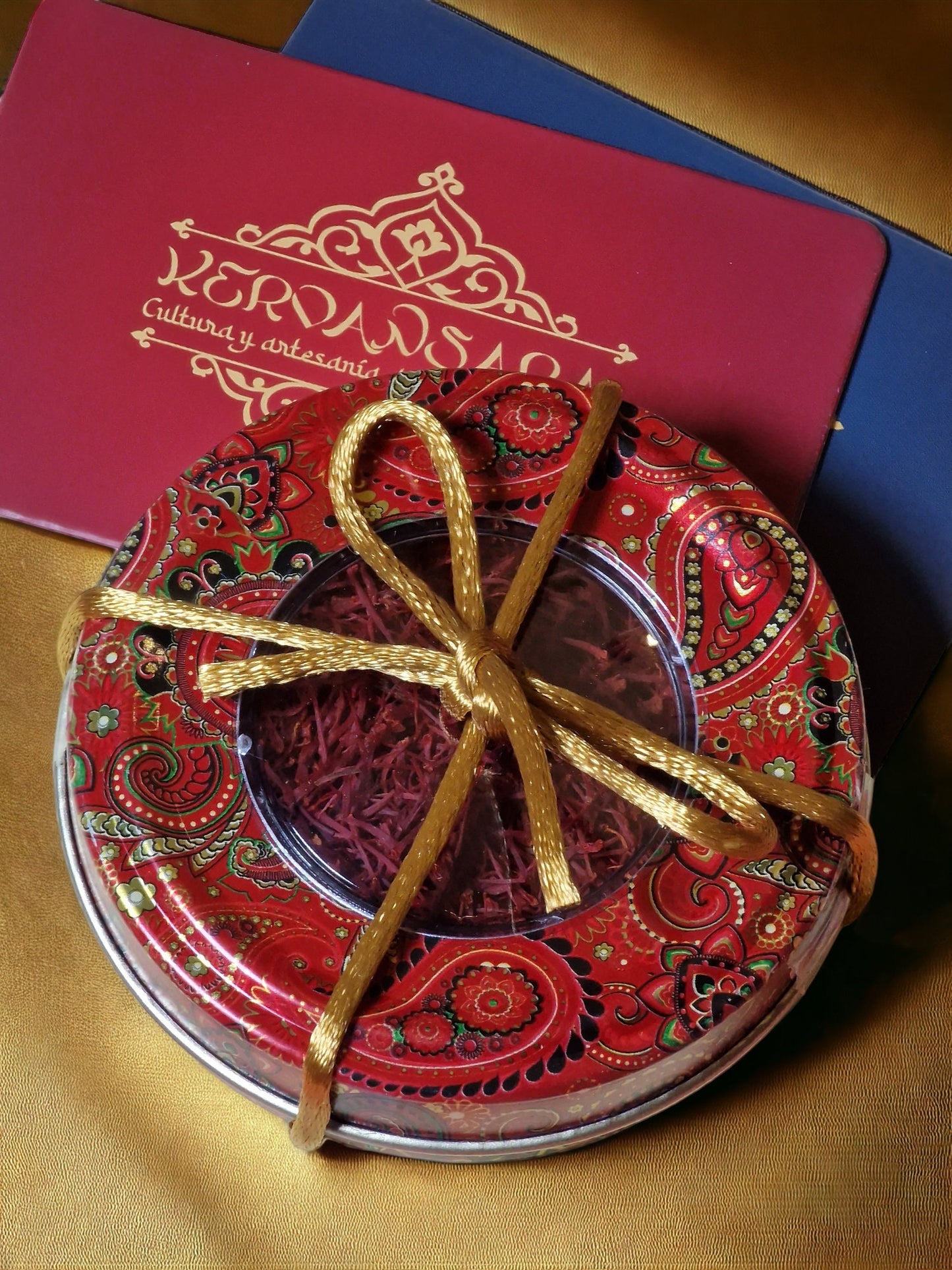Kervansara
Premium Quality Handcrafted Persian Saffron (Long Strands) - Metal Gift Box (except for purchases of 0.5 gr & 1 gr)
Premium Quality Handcrafted Persian Saffron (Long Strands) - Metal Gift Box (except for purchases of 0.5 gr & 1 gr)
Couldn't load pickup availability
..With an intense, unmistakable crimson hue... with a pleasant aroma and a peculiar, slightly bitter taste... this is the Persian "red gold", saffron, the most valuable spice in the world that you can enjoy at your fingertips with Kervansara. We begin this adventure with great enthusiasm by offering you the best 100% pure Persian saffron without additives or artificial coloring and grown in a totally sustainable way by trusted farmers. We invite you to get closer to its rich gastronomic culture through one of its greatest references and for this we have the best quality, which is characterized by its deep red color and its intense and delicious aroma.
Our premium artisanal saffron threads come presented in beautiful metal boxes with varied and colorful Persian designs that we send randomly. Its crocin values are higher than 250, which means it has the best coloring power (since all the non-red parts have been removed in the process), as well as having an intense fragrance and an exquisite flavor.
Among the medicinal properties of this spice are its antidepressant, anti-inflammatory, memory and vitality enhancing powers, as a remedy for insomnia, colds, uterine bleeding and menstrual cramps or its use in stomach and cancer diseases. It is also very rich in antioxidants, B vitamins, helps eye health and prevents the appearance of cardiovascular problems and Alzheimer's. The Persian doctor Avicenna himself, author of "The Canon of Medicine" in the 11th century, one of the most famous books in the history of this science, recognized and recommended the benefits of saffron in heart treatments, to improve blood circulation or breathing.
This species thrives in arid areas as it does not need much water to grow; that is why the Iranian plateau has been the perfect place for its cultivation for about 5,000 years. It is not surprising that the country has become the largest producer and exporter, producing more than 92% of the world's saffron, which it exports to 67 countries.
At dawn in autumn, the delicate violet flower is harvested. It usually has six petals and contains three yellow stamens branched into a red stigma. On special occasions, it can have up to six, in which case it is a symbol of good luck.
The big question that many people ask is how simple aromatic threads can reach such high prices on the market; we are talking about the fact that their value can vary greatly from one country to another and depending on the quality. In reality, the answer is very simple and that is that their collection involves a great deal of manual labor and really laborious work. The thoroughness and patience required to extract the three stigmas from each flower, taking into account that to obtain one gram of dry saffron at least 170 flowers are required, are the reason for its high cost. Another factor to take into account is that the stigmas have to be removed immediately; the work cannot be left from one day to the next, since it is most likely that they will stick to the flower and become useless.
The reliefs on the great monumental staircase at Persepolis bear witness to the great value that was already attached to this plant in ancient times. In one of the representations, the delegate of the Medes, one of the 23 nations subject to the Persian Empire, offers saffron as a tribute to the monarch Darius I the Great. Throughout history, its characteristic colour allowed it to be used as a dye for parchment sheets, since saffron water darkened the white of the paper, which according to the Persian belief weakened eyesight. It is also used as a natural dye in the manufacture of the famous Persian carpets, being one of the most valued shades with its beautiful golden yellow colour.
But it is undoubtedly in the culinary field where it is the great protagonist. It is especially used in the cuisines of India, Spain, Morocco... and it is the jewel that cannot be missing in a Persian kitchen. You will find it in many different forms: diluted in warm water to flavour and decorate rice dishes, in stews, in desserts such as sholeh zard (a colourful pudding made of rice, cardamom, rose water and saffron) or flavouring pistachio ice cream or in small strands inside sugar crystals as a candy to sweeten tea.
We recommend storing the product in a cool, dry place away from direct light.
Share













